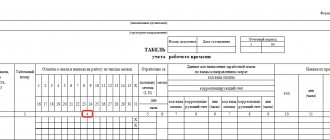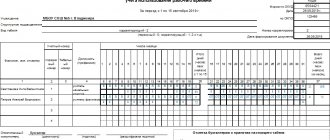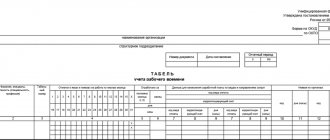In horizontal orientation
In vertical orientation
DOWNLOAD Production calendar for 2020 in horizontal orientation (PDF, 47 kb) Production calendar for 2020 in vertical orientation (PDF, 30 kb)
Calendar with 5-day week
Working time standards
Holidays and shortened days
Transfers of days off
Calendar with 6-day week
A production calendar is a document that defines working time standards, indicating weekends, holidays and pre-holiday days. Based on this data, work schedules are drawn up, including a document recording the actual time worked, the data of which at the end of the period determines the size of the salary. Our calendar is formatted in such a way that it is easy and understandable to navigate even for an inexperienced accountant or personnel officer.
Quarterly production calendar for 2020 with a 5-day week
31 – holiday
31 – pre-holiday day
31 – day off
31 – working day
Short version
I quarter 2020
| January | ||||||
| Mon | Tue | Wed | Thu | Fri | Sat | Sun |
| 26 | 27 | 28 | 29 | 30 | 31 | 1 |
| 2 | 3 | 4 | 5 | 6 | 7 | 8 |
| 9 | 10 | 11 | 12 | 13 | 14 | 15 |
| 16 | 17 | 18 | 19 | 20 | 21 | 22 |
| 23 | 24 | 25 | 26 | 27 | 28 | 29 |
| 30 | 31 | 1 | 2 | 3 | 4 | 5 |
| February | ||||||
| Mon | Tue | Wed | Thu | Fri | Sat | Sun |
| 30 | 31 | 1 | 2 | 3 | 4 | 5 |
| 6 | 7 | 8 | 9 | 10 | 11 | 12 |
| 13 | 14 | 15 | 16 | 17 | 18 | 19 |
| 20 | 21 | 22 | 23 | 24 | 25 | 26 |
| 27 | 28 | 1 | 2 | 3 | 4 | 5 |
| March | ||||||
| Mon | Tue | Wed | Thu | Fri | Sat | Sun |
| 27 | 28 | 1 | 2 | 3 | 4 | 5 |
| 6 | 7 | 8 | 9 | 10 | 11 | 12 |
| 13 | 14 | 15 | 16 | 17 | 18 | 19 |
| 20 | 21 | 22 | 23 | 24 | 25 | 26 |
| 27 | 28 | 29 | 30 | 31 | 1 | 2 |
| January | February | March | I quarter | |
| Number of days in the period | ||||
| Calendar | 31 | 28 | 31 | 90 |
| workers | 17 | 18 | 22 | 57 |
| Weekends | 14 | 10 | 9 | 33 |
| Number of working hours per week | ||||
| 40 hours | 136 | 143 | 175 | 454 |
| 36 hours | 122,4 | 128,6 | 157,4 | 408,4 |
| 24 hours | 81,6 | 85,4 | 104,6 | 271,6 |
II quarter 2020
| April | ||||||
| Mon | Tue | Wed | Thu | Fri | Sat | Sun |
| 27 | 28 | 29 | 30 | 31 | 1 | 2 |
| 3 | 4 | 5 | 6 | 7 | 8 | 9 |
| 10 | 11 | 12 | 13 | 14 | 15 | 16 |
| 17 | 18 | 19 | 20 | 21 | 22 | 23 |
| 24 | 25 | 26 | 27 | 28 | 29 | 30 |
| May | ||||||
| Mon | Tue | Wed | Thu | Fri | Sat | Sun |
| 1 | 2 | 3 | 4 | 5 | 6 | 7 |
| 8 | 9 | 10 | 11 | 12 | 13 | 14 |
| 15 | 16 | 17 | 18 | 19 | 20 | 21 |
| 22 | 23 | 24 | 25 | 26 | 27 | 28 |
| 29 | 30 | 31 | 1 | 2 | 3 | 4 |
| June | ||||||
| Mon | Tue | Wed | Thu | Fri | Sat | Sun |
| 29 | 30 | 31 | 1 | 2 | 3 | 4 |
| 5 | 6 | 7 | 8 | 9 | 10 | 11 |
| 12 | 13 | 14 | 15 | 16 | 17 | 18 |
| 19 | 20 | 21 | 22 | 23 | 24 | 25 |
| 26 | 27 | 28 | 29 | 30 | 1 | 2 |
| April | May | June | II quarter | I half of the year | |
| Number of days in the period | |||||
| Calendar | 30 | 31 | 30 | 91 | 181 |
| workers | 20 | 20 | 21 | 61 | 118 |
| Weekends | 10 | 11 | 9 | 30 | 63 |
| Number of working hours per week | |||||
| 40 hours | 160 | 160 | 168 | 488 | 942 |
| 36 hours | 144 | 144 | 151,2 | 439,2 | 847,6 |
| 24 hours | 96 | 96 | 100,8 | 292,8 | 564,4 |
III quarter 2020
| July | ||||||
| Mon | Tue | Wed | Thu | Fri | Sat | Sun |
| 26 | 27 | 28 | 29 | 30 | 1 | 2 |
| 3 | 4 | 5 | 6 | 7 | 8 | 9 |
| 10 | 11 | 12 | 13 | 14 | 15 | 16 |
| 17 | 18 | 19 | 20 | 21 | 22 | 23 |
| 24 | 25 | 26 | 27 | 28 | 29 | 30 |
| 31 | 1 | 2 | 3 | 4 | 5 | 6 |
| August | ||||||
| Mon | Tue | Wed | Thu | Fri | Sat | Sun |
| 31 | 1 | 2 | 3 | 4 | 5 | 6 |
| 7 | 8 | 9 | 10 | 11 | 12 | 13 |
| 14 | 15 | 16 | 17 | 18 | 19 | 20 |
| 21 | 22 | 23 | 24 | 25 | 26 | 27 |
| 28 | 29 | 30 | 31 | 1 | 2 | 3 |
| September | ||||||
| Mon | Tue | Wed | Thu | Fri | Sat | Sun |
| 28 | 29 | 30 | 31 | 1 | 2 | 3 |
| 4 | 5 | 6 | 7 | 8 | 9 | 10 |
| 11 | 12 | 13 | 14 | 15 | 16 | 17 |
| 18 | 19 | 20 | 21 | 22 | 23 | 24 |
| 25 | 26 | 27 | 28 | 29 | 30 | 1 |
| July | August | September | III quarter | 9 months | |
| Number of days in the period | |||||
| Calendar | 31 | 31 | 30 | 92 | 273 |
| workers | 21 | 23 | 21 | 65 | 183 |
| Weekends | 10 | 8 | 9 | 27 | 90 |
| Number of working hours per week | |||||
| 40 hours | 168 | 184 | 168 | 520 | 1462 |
| 36 hours | 151,2 | 165,6 | 151,2 | 468 | 1315,6 |
| 24 hours | 100,8 | 110,4 | 100,8 | 312 | 876,4 |
IV quarter 2020
| October | ||||||
| Mon | Tue | Wed | Thu | Fri | Sat | Sun |
| 25 | 26 | 27 | 28 | 29 | 30 | 1 |
| 2 | 3 | 4 | 5 | 6 | 7 | 8 |
| 9 | 10 | 11 | 12 | 13 | 14 | 15 |
| 16 | 17 | 18 | 19 | 20 | 21 | 22 |
| 23 | 24 | 25 | 26 | 27 | 28 | 29 |
| 30 | 31 | 1 | 2 | 3 | 4 | 5 |
| November | ||||||
| Mon | Tue | Wed | Thu | Fri | Sat | Sun |
| 30 | 31 | 1 | 2 | 3 | 4 | 5 |
| 6 | 7 | 8 | 9 | 10 | 11 | 12 |
| 13 | 14 | 15 | 16 | 17 | 18 | 19 |
| 20 | 21 | 22 | 23 | 24 | 25 | 26 |
| 27 | 28 | 29 | 30 | 1 | 2 | 3 |
| December | ||||||
| Mon | Tue | Wed | Thu | Fri | Sat | Sun |
| 27 | 28 | 29 | 30 | 1 | 2 | 3 |
| 4 | 5 | 6 | 7 | 8 | 9 | 10 |
| 11 | 12 | 13 | 14 | 15 | 16 | 17 |
| 18 | 19 | 20 | 21 | 22 | 23 | 24 |
| 25 | 26 | 27 | 28 | 29 | 30 | 31 |
| October | November | December | IV quarter | II half of the year | 2017 | |
| Number of days in the period | ||||||
| Calendar | 31 | 30 | 31 | 92 | 184 | 365 |
| workers | 22 | 21 | 21 | 64 | 129 | 247 |
| Weekends | 9 | 9 | 10 | 28 | 55 | 118 |
| Number of working hours per week | ||||||
| 40 hours | 176 | 167 | 168 | 511 | 1031 | 1973 |
| 36 hours | 158,4 | 150,2 | 151,2 | 459,8 | 927,8 | 1775,4 |
| 24 hours | 105,6 | 99,8 | 100,8 | 306,2 | 618,2 | 1182,6 |
PRODUCTION CALENDAR FOR 2020
Go to the archive (2000-2017) >>>
Calendar 2020
| Months of the year Days of the week | January | February | March | April | |||||||||||||||||
| Monday | 2 | 9 | 16 | 23 | 30 | 6 | 13 | 20 | 27 | 6 | 13 | 20 | 27 | 3 | 10 | 17 | 24 | ||||
| Tuesday | 3 | 10 | 17 | 24 | 31 | 7 | 14 | 21 | 28 | 7 | 14 | 21 | 28 | 4 | 11 | 18 | 25 | ||||
| Wednesday | 4 | 11 | 18 | 25 | 1 | 8 | 15 | 22 | 1 | 8 | 15 | 22 | 29 | 5 | 12 | 19 | 26 | ||||
| Thursday | 5 | 12 | 19 | 26 | 2 | 9 | 16 | 23 | 2 | 9 | 16 | 23 | 30 | 6 | 13 | 20 | 27 | ||||
| Friday | 6 | 13 | 20 | 27 | 3 | 10 | 17 | 24 | 3 | 10 | 17 | 24 | 31 | 7 | 14 | 21 | 28 | ||||
| Saturday | 7 | 14 | 21 | 28 | 4 | 11 | 18 | 25 | 4 | 11 | 18 | 25 | 1 | 8 | 15 | 22 | 29 | ||||
| Sunday | 1 | 8 | 15 | 22 | 29 | 5 | 12 | 19 | 26 | 5 | 12 | 19 | 26 | 2 | 9 | 16 | 23 | 30 | |||
| Months of the year Days of the week | May | June | July | August | |||||||||||||||||
| Monday | 1 | 8 | 15 | 22 | 29 | 5 | 12 | 19 | 26 | 3 | 10 | 17 | 24 | 31 | 7 | 14 | 21 | 28 | |||
| Tuesday | 2 | 9 | 16 | 23 | 30 | 6 | 13 | 20 | 27 | 4 | 11 | 18 | 25 | 1 | 8 | 15 | 22 | 29 | |||
| Wednesday | 3 | 10 | 17 | 24 | 31 | 7 | 14 | 21 | 28 | 5 | 12 | 19 | 26 | 2 | 9 | 16 | 23 | 30 | |||
| Thursday | 4 | 11 | 18 | 25 | 1 | 8 | 15 | 22 | 29 | 6 | 13 | 20 | 27 | 3 | 10 | 17 | 24 | 31 | |||
| Friday | 5 | 12 | 19 | 26 | 2 | 9 | 16 | 23 | 30 | 7 | 14 | 21 | 28 | 4 | 11 | 18 | 25 | ||||
| Saturday | 6 | 13 | 20 | 27 | 3 | 10 | 17 | 24 | 1 | 8 | 15 | 22 | 29 | 5 | 12 | 19 | 26 | ||||
| Sunday | 7 | 14 | 21 | 28 | 4 | 11 | 18 | 25 | 2 | 9 | 16 | 23 | 30 | 6 | 13 | 20 | 27 | ||||
| Months of the year Days of the week | September | October | November | December | |||||||||||||||||
| Monday | 4 | 11 | 18 | 25 | 2 | 9 | 16 | 23 | 30 | 6 | 13 | 20 | 27 | 4 | 11 | 18 | 25 | ||||
| Tuesday | 5 | 12 | 19 | 26 | 3 | 10 | 17 | 24 | 31 | 7 | 14 | 21 | 28 | 5 | 12 | 19 | 26 | ||||
| Wednesday | 6 | 13 | 20 | 27 | 4 | 11 | 18 | 25 | 1 | 8 | 15 | 22 | 29 | 6 | 13 | 20 | 27 | ||||
| Thursday | 7 | 14 | 21 | 28 | 5 | 12 | 19 | 26 | 2 | 9 | 16 | 23 | 30 | 7 | 14 | 21 | 28 | ||||
| Friday | 1 | 8 | 15 | 22 | 29 | 6 | 13 | 20 | 27 | 3 | 10 | 17 | 24 | 1 | 8 | 15 | 22 | 29 | |||
| Saturday | 2 | 9 | 16 | 23 | 30 | 7 | 14 | 21 | 28 | 4 | 11 | 18 | 25 | 2 | 9 | 16 | 23 | 30 | |||
| Sunday | 3 | 10 | 17 | 24 | 1 | 8 | 15 | 22 | 29 | 5 | 12 | 19 | 26 | 3 | 10 | 17 | 24 | 31 | |||
*Non-working holidays.
** According to the Resolution of the Council of Ministers of the Republic of Belarus dated November 9, 2016 No. 912 “On the transfer of working days in 2020”, working days are postponed: from Monday January 2 to Saturday January 21, from Monday April 24 to Saturday April 29, from Monday May 8 to Saturday 6 May, Monday 6 November to Saturday 4 November.
| For information April 16—Catholic and Orthodox Easter. April 25—Radunitsa. |
| Production calendar for 2020 for a five-day work week | |||||
| Months and other periods of the year | Amount of days | Estimated standard working time (in hours) | |||
| calendar | workers (regular and pre-holiday) | non-working days (weekends and holidays) | with a 40 hour work week | with a 35 hour work week | |
| January | 31 | 22 (21 + 1) | 9 (7 + 2) | 175 | 153 |
| February | 28 | 20 | 8 | 160 | 140 |
| March | 31 | 22 (21 + 1) | 9 (8 + 1) | 175 | 153 |
| I quarter | 90 | 64 | 26 | 510 | 446 |
| April | 30 | 19 (18 + 1) | 11 (10 + 1) | 151 | 132 |
| May | 31 | 21 (20 + 1) | 10 (8 + 2) | 167 | 146 |
| June | 30 | 22 | 8 | 176 | 154 |
| II quarter | 91 | 62 | 29 | 494 | 432 |
| 1st half of the year | 181 | 126 | 55 | 1 004 | 878 |
| July | 31 | 20 | 11 (10 + 1) | 160 | 140 |
| August | 31 | 23 | 8 | 184 | 161 |
| September | 30 | 21 | 9 | 168 | 147 |
| III quarter | 92 | 64 | 28 | 512 | 448 |
| October | 31 | 22 | 9 | 176 | 154 |
| November | 30 | 21 (20 + 1) | 9 (8 + 1) | 167 | 146 |
| December | 31 | 20 | 11 (10 + 1) | 160 | 140 |
| IV quarter | 92 | 63 | 29 | 503 | 440 |
| 2nd half of the year | 184 | 127 | 57 | 1 015 | 888 |
| 2017 | 365 | 253 (248 + 5) | 112 (103 + 9) | 2 019 | 1 766 |
| Production calendar for 2020 for a six-day work week | |||||
| Months and other periods of the year | Amount of days | Estimated standard working time (in hours) | |||
| calendar | workers (regular and pre-holiday) | non-working days (weekends and holidays) | with a 40 hour work week | with a 35 hour work week | |
| January | 31 | 25 (24 + 1) | 6 (4 + 2) | 168 | 146 |
| February | 28 | 24 | 4 | 160 | 140 |
| March | 31 | 26 (25 + 1) | 5 (4 + 1) | 173 | 151 |
| I quarter | 90 | 75 | 15 | 501 | 437 |
| April | 30 | 24 (23 + 1) | 6 (5 + 1) | 157 | 138 |
| May | 31 | 25 (24 + 1) | 6 (4 + 2) | 166 | 145 |
| June | 30 | 26 | 4 | 174 | 152 |
| II quarter | 91 | 75 | 16 | 497 | 435 |
| 1st half of the year | 181 | 150 | 31 | 998 | 872 |
| July | 31 | 25 | 6 (5 + 1) | 165 | 145 |
| August | 31 | 27 | 4 | 181 | 158 |
| September | 30 | 26 | 4 | 172 | 151 |
| III quarter | 92 | 78 | 14 | 518 | 454 |
| October | 31 | 26 | 5 | 174 | 152 |
| November | 30 | 25 (24 + 1) | 5 (4 + 1) | 166 | 145 |
| December | 31 | 25 | 6 (5 + 1) | 165 | 145 |
| IV quarter | 92 | 76 | 16 | 505 | 442 |
| 2nd half of the year | 184 | 154 | 30 | 1 023 | 896 |
| 2017 | 365 | 304 (299 + 5) | 61 (52 + 9) | 2 021 | 1 768 |
| For information For a more detailed study, see the commentary . |
Working time standards for 2020 in the table
Below is a summary table of the number of calendar days, working days, weekends and the number of working hours for 40-, 36-, 24-hour work weeks by month, quarter, half-year and in general for the entire 2020. Keep it for yourself.
| Period | Amount of days | Working hours per week | ||||
| Calendar | workers | Weekends | 40 hours | 36 hours | 24 hours | |
| January | 31 | 17 | 14 | 136 | 122,4 | 81,6 |
| February | 28 | 18 | 10 | 143 | 128,6 | 85,4 |
| March | 31 | 22 | 9 | 175 | 157,4 | 104,6 |
| 1st quarter | 90 | 57 | 33 | 454 | 408,4 | 271,6 |
| April | 30 | 20 | 10 | 160 | 144 | 96 |
| May | 31 | 20 | 11 | 160 | 144 | 96 |
| June | 30 | 21 | 9 | 168 | 151,2 | 100,8 |
| 2nd quarter | 91 | 61 | 30 | 488 | 439,2 | 292,8 |
| 1st half of the year | 181 | 118 | 63 | 942 | 847,6 | 564,4 |
| July | 31 | 21 | 10 | 168 | 151,2 | 100,8 |
| August | 31 | 23 | 8 | 184 | 165,6 | 110,4 |
| September | 30 | 21 | 9 | 168 | 151,2 | 100,8 |
| 3rd quarter | 92 | 65 | 27 | 520 | 468 | 312 |
| October | 31 | 22 | 9 | 176 | 158,4 | 105,6 |
| November | 30 | 21 | 9 | 167 | 150,2 | 99,8 |
| December | 31 | 21 | 10 | 168 | 151,2 | 100,8 |
| 4th quarter | 92 | 64 | 28 | 511 | 459,8 | 306,2 |
| 2nd half | 184 | 129 | 55 | 1031 | 927,8 | 618,2 |
| 2017 | 365 | 247 | 118 | 1973 | 1775,4 | 1182,6 |
FILES
Where and how are working time standards applied?
The standard working time is determined by the total number of hours that need to be worked over a certain calendar period.
This indicator is used to approve the operating mode of the enterprise. The standard was developed taking into account the adequate distribution of the workload on the employee, preventing the arbitrariness of the employer in terms of unauthorized increase in the number of working hours.
The Labor Code defines the duration of working hours - 40 hours per week for full-time employment (Article 91). Article 92 specifies the duration of a shortened working day for adolescents under 16 years of age, young people from 16 to 18 years of age, disabled people, hazardous workers and teachers.
The length of the working week for each category of citizens allows us to calculate the standard working hours for any month.
To do this, take the weekly norm of working hours, divide by 5 (the number of working days in a classic 5-day week), and then multiply by the sum of working days of a particular calendar month (total number of days minus weekends and holidays). The result is the standard working hours for the billing month.
Important! If there were holidays in the month, then it should be taken into account that the weekday preceding them is always 1 hour shorter than the standard working hours. Thus, from the number of days obtained by the specified formula, one more hour must be subtracted for each day preceding the holiday.
In this simple way, the number of hours that each employee must work to receive 100% of the salary is obtained. Based on the ratio of days actually worked to the standard for a particular month, the amount of wages is determined.
Working time standards are used to organize the work regime of workers of any profession. The production standard applied at manufacturing enterprises is, in fact, also a type of standardization of working time.
How to determine working hours
Standard working hours are usually determined depending on how long working hours are established during a five-day work week with two days off (Saturday and Sunday) and based on the length of the daily work shift. This procedure is determined by Order of the Ministry of Health and Social Development of Russia dated August 13, 2009 N 588n.
If we work a 40-hour work week, then the standard working time will be 8 hours. With a 36-hour work week it will be equal to 7.2 hours, and with a 24-hour work week it will be 4.8 hours.
Part 1 of Article 95 of the Labor Code of the Russian Federation states that the duration of the work shift that precedes a holiday is reduced by one hour. So, in 2020 we will work one hour less on days such as February 22, March 7 and November 3. Moreover, this standard working time applies to all work and rest regimes.
Holidays and shortened days according to the calendar
Below is a table from which it is clearly seen that in 2017 there will be several “long” weekends. We also note that a shortened working day involves reducing working time by 1 hour.
| Holidays | Holiday | Shortened days |
| January 1-6,8 | New Year holidays | |
| Jan. 7 | Nativity | |
| February 23-26 | Defender of the Fatherland Day | February 22 |
| March 8 | International Women's Day | March 7 |
| April 29 - May 1 | Labour Day | |
| May 6-9 | Victory Day | |
| June 10-12 | Russia Day | |
| November 4-6 | National Unity Day | the 3rd of November |
How many working days did the working calendar contain - 2020
Non-working days included in the working time calendar for 2016 were classified as such thanks to the Decree of the Government of the Russian Federation “On the transfer of days off in 2020” dated September 24, 2015 No. 1017. In addition, the 2016 calendar contains dated working days and days off due to employees and holidays.
Let us note what working time standards were proposed in the working time calendar - 2016 :
- number of calendar days - 366;
- workers - 247;
- weekends and holidays - 119.
Time spent working:
- with a 40-hour week it was 1,974 hours per year;
- at 36 hours - 1,776 hours;
- at 24 hours - 1,183 hours.
The working time calendar for 2020 is posted on our website.
Postponement of holidays in 2020
In 2020, January 1 and 7, as well as November 4 fall on weekends. Therefore the transfers will be as follows:
- From Sunday January 1st to Friday February 24th
- From Saturday January 7th to Monday May 8th
- From Saturday November 4th to Monday November 6th
This follows from the text of the Decree of the Government of the Russian Federation of August 4 No. 756 “On the transfer of days off in 2020” signed by D.A. Medvedev.
How and why are weekends postponed?
There are 14 official holidays in Russia. Every year the Government adopts another resolution on their transfer. Such an event is carried out in order to optimize the production calendar and avoid a “ragged” work schedule. There are a few simple transfer rules:
- If a holiday falls on a weekend, it is moved to the working day following that weekend.
- Working hours on the day preceding a holiday are reduced by 1 hour.
- In order for workers to be able to rationally use their rest days, weekends are sometimes transferred to weekdays. For the same reasons, it is allowed to transfer 2 days off during the New Year holidays to any other month.
If you are from the Republic of Tatarstan or Bashkortostan: Production calendar 2020 for the Republic of Tatarstan Production calendar 2020 for the Republic of Bashkortostan
All Russian holidays of 2020 in a single table
Russia occupies one of the leading places in the world in terms of the number of holidays per year. I would like to immediately note that not every holiday has the status of a day off. To become one, you need a corresponding Decree signed by the President of the Russian Federation. We have combined all the 2020 holidays into one single table, and by looking at it, you can immediately be convinced that there will always be a reason!
Download calendar files for printing on a printer (A4 format)
Choose the most convenient format for printing your calendar:
DOWNLOAD CALENDAR FILES7 files
Download production calendar in JPG:
,
,
,
(on 4 pages) (on 4 pages)
Save it, it will come in handy:
Production calendar with a six-day work week
The law provides that some enterprises can establish a 6-day working week (Article 100 of the Labor Code of the Russian Federation). With this work schedule, the day off will be Sunday (Article 111 of the Labor Code of the Russian Federation). At the same time, the number of working hours on the eve of a day off cannot be more than 5 hours (Article 95 of the Labor Code of the Russian Federation). The limitation of 40 working hours with a 6-day working week remains (Article 91 of the Labor Code of the Russian Federation), therefore in practice the following scheme for distributing the number of hours by day of the week is often used, in the order from Monday to Saturday: 7+7+7+7+7 +5=40.
FILES
Work schedules provided for by the Labor Code of the Russian Federation
The classic work process model provides for a 5-day work week with 2 days off and a working day of 8 hours. Not all enterprises can work according to this scheme, so there are other work schedule options:
- Irregular working hours. For employees who stay at work after the end of the working day or come to work before it starts. The Labor Code of the Russian Federation strictly defines the list of positions for which this is permissible.
- Shift work. Introduced in enterprises that operate longer than the maximum permissible daily work duration.
- Flexible schedule. Provides the ability to select the start time, end time and duration of the working day. The main thing is to develop the required hours per month and year.
- Fragmented workday. A working day with a break breaking it up into parts. In total, it cannot exceed the duration of daily work permitted by the Labor Code.
Important! In work schedules other than the classic five-day workday, the summarized accounting method is used. In this case, it is not the weekly standard that is taken into account, but the monthly or even annual one. The duration of working hours for the period, on average, must be equal to the duration of the working day permitted by the Labor Code.
Why do you need a production calendar?
Employees of HR departments and accounting departments cannot do without a production calendar. However, this document is also used by other employees of various companies and enterprises. So, to summarize, we can highlight why it is needed:
- Drawing up a work schedule. Using a production calendar allows you to take into account the number of weekends and working days in the month for which the schedule is being drawn up.
- Determination of the norm of working time for each period. The specifics of calculating this indicator will be discussed below.
- Calculation of wages, vacation and sick leave benefits. Based on the working time sheet at the end of the period, the ratio of actually worked time to planned time is determined. The resulting values help calculate the amount of monthly payments and bonuses.
- Vacation planning. Employees, having familiarized themselves with the production calendar, can choose the best time for vacation, determine the dates of short-term trips, and purchase tickets and vouchers in advance.








